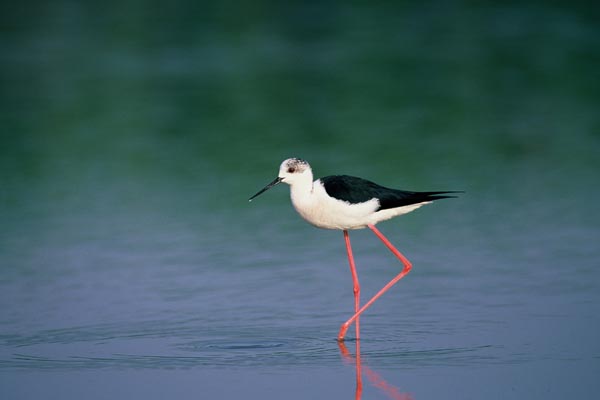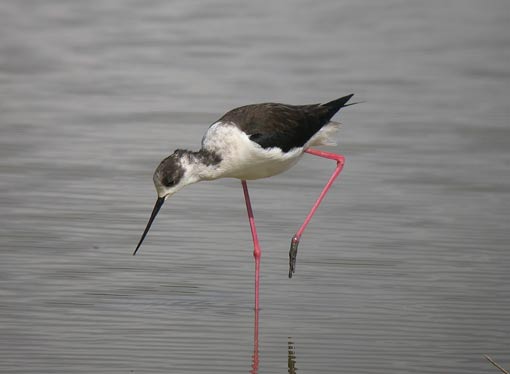Black-Winged Stilt Biography








The long, slender bill of the Black-winged Stilt is used like a pair of fine tweezers as the bird forages by pecking at tiny invertebrates on the water’s surface. Although this is its most common feeding method, stilts have been recorded using at least nine different methods to feed. They usually forage by wading in water up to belly deep, but also feed along the muddy margins of wetlands, regularly forming large, noisy feeding flocks, often in association with Banded Stilts and Red-necked Avocets.
The Black-winged Stilt is a large black and white wader with long orange-red legs and a straight black bill. It has black on the back of the neck, a white collar and a red iris. Both sexes are similar, and the plumage does not change during the year. Black-winged Stilts give a repeated high-pitched barking call. Young Black-winged Stilts lack black on the back of the neck and have grey-brown wings and back, speckled with white. They have a smudged grey crown, which extends down the back of the neck as the birds get older.
Black-winged Stilts are related to Banded Stilts, Cladorhynchus leucocephalus, which have a broad chestnut band across the breast (absent in young birds) and lack the black on the back of the neck. Young Banded Stilts can be separated from young Black-winged Stilts by their all white back and black wings.
The Black-winged Stilt has a wide range, including Australia, Central and South America, Africa, southern and south-eastern Asia and parts of North America and Eurasia. More locally it also occurs through Indonesia, New Guinea, the Solomon Islands, the Philippines and New Zealand. Although widespread on the Australian mainland, it is an uncommon visitor to Tasmania.
The Black-winged Stilt is a social species, and is usually found in small groups. Black-winged Stilts prefer freshwater and saltwater marshes, mudflats, and the shallow edges of lakes and rivers.
Black-winged Stilts feed mainly on aquatic insects, but will also take molluscs and crustaceans. They rarely swim for food (unlike the Banded Stilt), preferring instead to wade in shallow water, and seize prey on or near the surface. Occasionally, birds plunge their heads below the surface to catch sub-aquatic prey.
As with other activities, Black-winged Stilts nest in small colonies; within these, the mated pairs strongly defend their individual territories. The nest may be anything from a simple shallow scrape on the ground to a mound of vegetation placed in or near the water. Both sexes incubate the eggs and look after the young.
Black-Winged Stilt
Black-Winged Stilt

Black-Winged Stilt

Black-Winged Stilt

Black-Winged Stilt

Black-Winged Stilt

Black-Winged Stilt
Black-Winged Stilt

Black-Winged Stilt
Black-Winged Stilt,Gujarat
Black-Winged Stilt
No comments:
Post a Comment